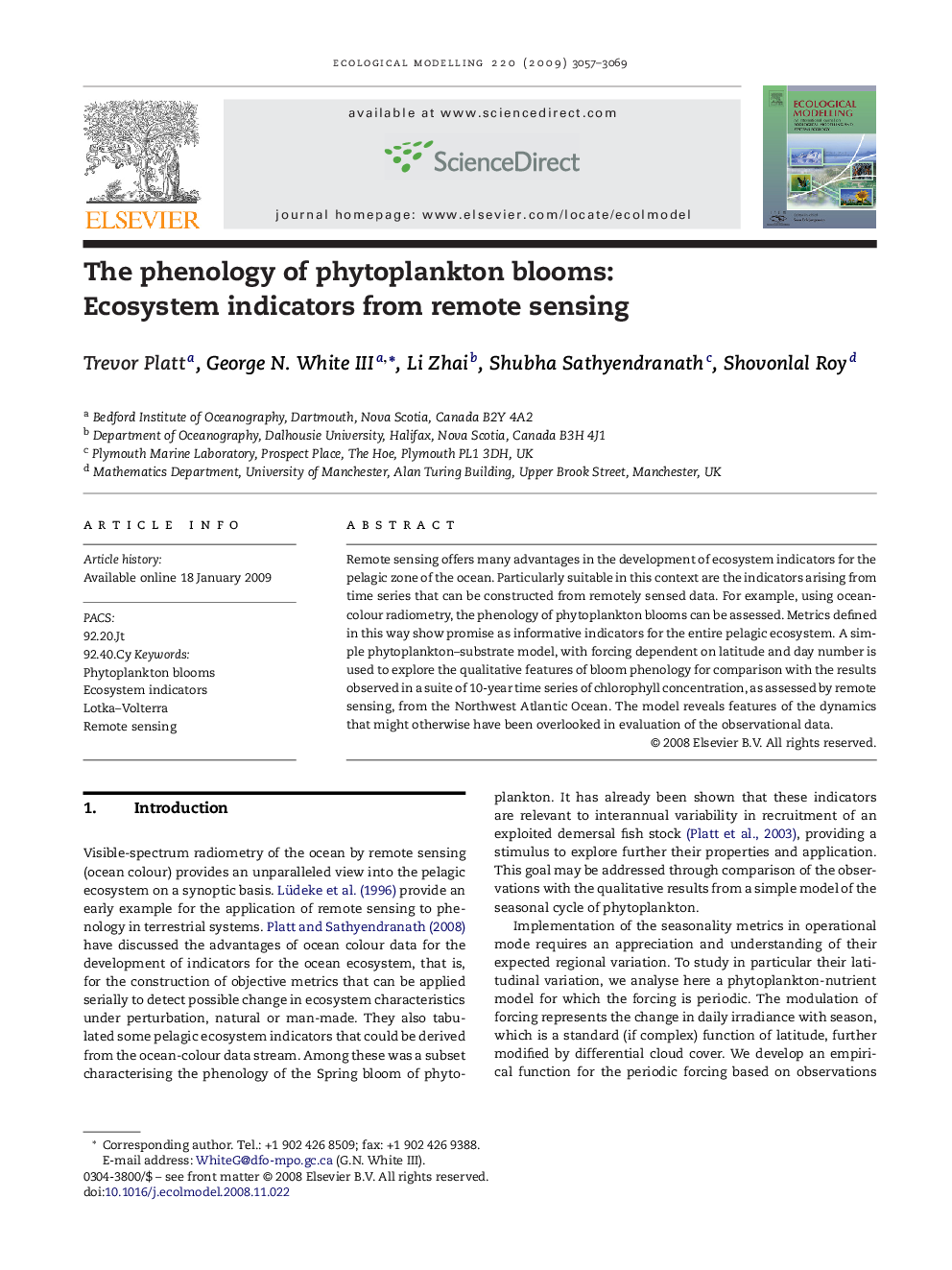| Article ID | Journal | Published Year | Pages | File Type |
|---|---|---|---|---|
| 4377645 | Ecological Modelling | 2009 | 13 Pages |
Abstract
Remote sensing offers many advantages in the development of ecosystem indicators for the pelagic zone of the ocean. Particularly suitable in this context are the indicators arising from time series that can be constructed from remotely sensed data. For example, using ocean-colour radiometry, the phenology of phytoplankton blooms can be assessed. Metrics defined in this way show promise as informative indicators for the entire pelagic ecosystem. A simple phytoplankton-substrate model, with forcing dependent on latitude and day number is used to explore the qualitative features of bloom phenology for comparison with the results observed in a suite of 10-year time series of chlorophyll concentration, as assessed by remote sensing, from the Northwest Atlantic Ocean. The model reveals features of the dynamics that might otherwise have been overlooked in evaluation of the observational data.
Related Topics
Life Sciences
Agricultural and Biological Sciences
Ecology, Evolution, Behavior and Systematics
Authors
Trevor Platt, George N. III, Li Zhai, Shubha Sathyendranath, Shovonlal Roy,
